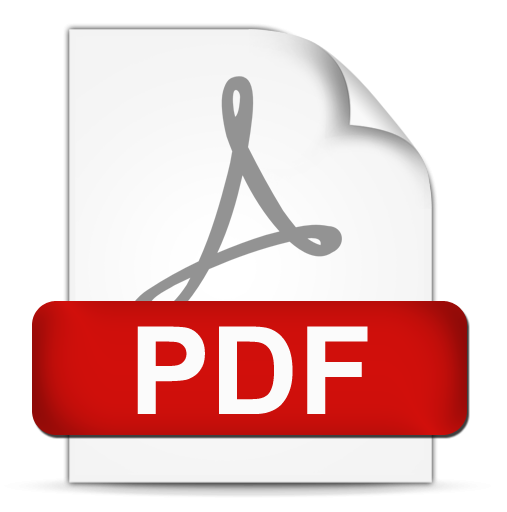UJI EFEKTIVITAS ANTIBAKTERI EKSTRAK NIGELLA SATIVA L. TERHADAP BAKTERI ESCHERICHIA COLI SECARA IN VITRO
 Abstract Views:
298 times
Abstract Views:
298 times
 PDF Downloads:
80 times
PDF Downloads:
80 times
Abstract
Abstract—Infectious diseases remain a significant public health problem. One infectious disease can be caused by Escherichia coli. However, currently there is increasing resistance of Escherichia coli to several antibiotics. This has led to an increase in demand to develop new antibiotics that can overcome the development of resistance. Medicinal plants have enormous potential in the discovery of bioactive compounds that can fight resistant microorganisms. Nigella sativa L. is one such medicinal plant known for its antibacterial properties. The seed extract of Nigella sativa L. was obtained using the maceration method, resulting in four different concentrations: 12.5%, 25%, 50%, and 100%. These extracts were tested against Escherichia coli bacteria isolated on Mueller Hinton Agar media using the disk diffusion method. Nigella sativa L. seed extract with aquadest solvent produced average inhibition zone diameters of 0mm; 0mm; 0mm; 7mm, while with n-hexane solvent it produced average inhibition zone diameters of 0mm; 0mm; 0mm; 8.375mm at concentrations of 12.5%; 25%; 50%; 100%. The antibacterial activity of Nigella sativa L. seed extract was most effective at 100% concentration for both solvents. This study found no significant difference in antibacterial effectiveness between the aquadest and n-hexane solvent extracts of Nigella sativa L. against Escherichia coli.
Keywords: nigella sativa L., rscherichia coli, antibacterial
Abstrak—Penyakit infeksi masih menjadi salah satu masalah kesehatan masyarakat yang penting. Salah satu penyakit infeksi dapat disebabkan oleh Escherichia coli. Namun, saat ini ada peningkatan resistensi Escherichia coli terhadap beberapa antibiotik. Hal ini menyebabkan peningkatan permintaan untuk mengembangkan antibiotik baru yang dapat mengatasi perkembangan resistensi. Tanaman obat memiliki potensi besar dalam penemuan senyawa bioaktif yang dapat melawan mikroorganisme resisten. Nigella sativa L. adalah salah satu tanaman obat yang dikenal memiliki sifat antibakteri. Ekstrak biji Nigella sativa L. diperoleh menggunakan metode maserasi, menghasilkan empat konsentrasi berbeda: 12,5%, 25%, 50%, dan 100%. Ekstrak-ekstrak ini diuji terhadap bakteri Escherichia coli yang diisolasi pada media Agar Mueller Hinton menggunakan metode difusi cakram. Ekstrak biji Nigella sativa L. dengan pelarut aquadest menghasilkan diameter zona hambat rata-rata 0mm; 0mm; 0mm; 7mm, sedangkan dengan pelarut n-heksana menghasilkan diameter zona hambat rata-rata 0mm; 0mm; 0mm; 8,375mm pada konsentrasi 12,5%; 25%; 50%; 100%. Aktivitas antibakteri ekstrak biji Nigella sativa L. paling efektif pada konsentrasi 100% untuk kedua pelarut. Penelitian ini menemukan tidak ada perbedaan signifikan dalam efektivitas antibakteri antara ekstrak pelarut aquadest dan n-heksana dari Nigella sativa L. terhadap Escherichia coli.
Kata kunci: nigella sativa L., escherichia coli, antibakteri
Downloads
References
Asworo, R. Y., & Widwiastuti, H. (2023). Pengaruh ukuran serbuk simplisia dan waktu maserasi terhadap aktivitas antioksidan ekstrak kulit sirsak. Indonesian Journal of Pharmaceutical Education, 3(2), 256–263. https://doi.org/10.37311/ijpe.v3i2.19906
Cho, G., Lee, E., & Kim, J. (2021). Structural insights into phosphatidylethanolamine formation in bacterial membrane biogenesis. Scientific Reports, 11, 1–15. https://doi.org/10.1038/s41598-021-85195-5
Davis, W. W., & Stout, T. R. (1971). Disc plate method of microbiological antibiotic assay. Applied and Environmental Microbiology, 22(4), 659–665. https://doi.org/10.1128/am.22.4.659-665.1971
Ibrahim, A. M., Yuniata, & Sriherfyna, F. H. (2015). Pengaruh suhu dan lama waktu ekstraksi terhadap sifat kimia dan fisik pada pembuatan minuman sari jahe merah (Zingiber officinale var. Rubrum) dengan kombinasi penambahan madu sebagai pemanis. Jurnal Pangan Dan Agroindustri, 3(2), 530–541.
Leksono, W. B., Pramesti, R., Widi, G., & Setyati, W. A. (2018). Jenis pelarut metanol Dan n-heksana terhadap aktivitas antioksidan ekstrak rumput laut Gelidium sp . dari pantai drini Gunungkidul – Yogyakarta. Jurnal Kelautan Tropis, 21(1), 9–16. https://doi.org/https://doi.org/10.14710/jkt.v21i1.2236
Linggama, G. A., Montolalu, L. A. D. Y., Salindeho, N., Taher, N., Harikedua, S. D., Makapedua, D. M., & Damongilala, L. (2019). Aktivitas antibakteri ekstrak air rebusan daun mangrove segar Sonneratia alba di desa wori. Jurnal Media Teknologi Hasil Perikanan, 7(2), 41–45.
Muthoharoh. (2019). Pengaruh Variasi Suhu dan Waktu Ekstraksi Metode Ultrasonik terhadap Rendemen Ekstrak dan Aktivitas Antioksidan Ekstrak Daun Stevia rebaudiana Bert. M [Universitas Islam Negeri Syarif Hidayatullah]. https://repository.uinjkt.ac.id/dspace/bitstream/123456789/49548/1/Muthoharoh-FIKES.pdf
Permenkes. (2021). Peraturan Menteri Kesehatan Republik Indonesia Nomor 26 Tahun 2021 Tentang Pedoman Penggunaan Antibiotik. Kementrian Kesehatan Republik Indonesia. Retrieved from https://yankes.kemkes.go.id/unduhan/fileunduhan_1658480966_921055.pdf
Rusmarilin, H., Lubis, Z., Lubis, L. M., & Barutu, Y. A. P. (2019). Potential of natural antioxidants of black cumin seed ( Nigella sativa ) and sesame seed ( Sesamum indicum ) extract by microencapsulation methods Potential of natural antioxidants of black cumin seed ( Nigella sativa ) and sesame seed ( Sesamum indicum ). IOP Conf. Series: Earth and Environmental Science, 260. https://doi.org/10.1088/1755-1315/260/1/012097
Shafodino, F. S., Lusilao, J. M., & Mwapagha, L. M. (2022). Phytochemical characterization and antimicrobial activity of Nigella sativa seeds. PLoS ONE, 17(8), 1–20. https://doi.org/10.1371/journal.pone.0272457
Sultani, T. D. M. Al, Fakhri, S. A., & Al-Zuhairi, W. H. N. (2021). Comparison of the antimicrobial activity of Nigella sativa aqueous and oil extracts. Iranian Journal of War & Public Health, 13(4), 305–311. https://doi.org/10.29252/ijwph.13.4.305
Tiji, S., Lakrat, M., Rokni, Y., Mejdoubi, E. M., Hano, C., Addi, M., Asehraou, A., & Mimouni, M. (2022). Characterization and antimicrobial activity of Nigella sativa extracts encapsulated in hydroxyapatite sodium silicate glass composite. Antibiotics, 11(2), 170. https://doi.org/https://doi.org/10.3390/antibiotics11020170
Vaou, N., Stavropoulou, E., Voidarou, C., Tsigalou, C., & Bezirtzoglou, E. (2021). Towards advances in medicinal plant antimicrobial activity : A review study on challenges and future perspectives. Microorganisms, 9(10), 1–28. https://doi.org/10.3390/microorganisms9102041
Vaou, N., Stavropoulou, E., Voidarou, C., Tsigalou, C., & Bezirtzoglou, E. (2021). Towards advances in medicinal plant antimicrobial activity : A review study on challenges and future perspectives. Microorganisms, 9(10), 1–28. https://doi.org/10.3390/microorganisms9102041
- Articles published in CALYPTRA are licensed under a Creative Commons Attribution-ShareAlike 4.0 International license. You are free to copy, transform, or redistribute articles for any lawful purpose in any medium, provided you give appropriate credit to the original author(s) and the journal, link to the license, indicate if changes were made, and redistribute any derivative work under the same license.
- Copyright on articles is retained by the respective author(s), without restrictions. A non-exclusive license is granted to CALYPTRA to publish the article and identify itself as its original publisher, along with the commercial right to include the article in a hardcopy issue for sale to libraries and individuals.
- By publishing in CALYPTRA, authors grant any third party the right to use their article to the extent provided by the Creative Commons Attribution-ShareAlike 4.0 International license.


